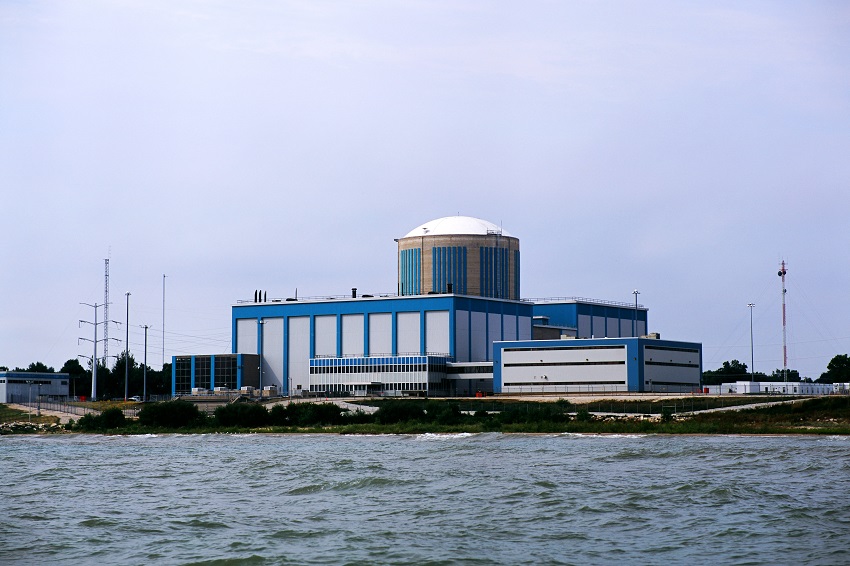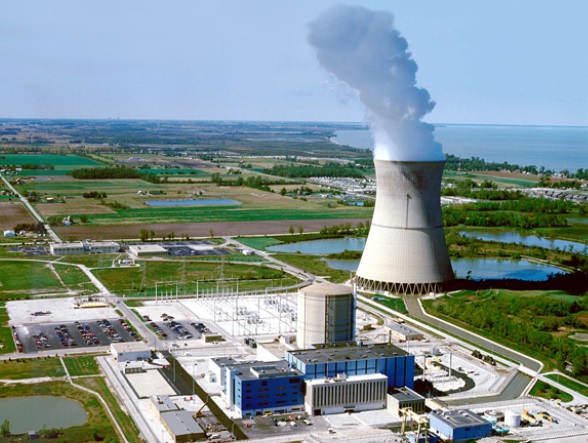U.S. Nuclear Plants a "Vital National Asset"

Lost to us now- the Kewaunee Nuclear Plant, shut down permanently in May, 2013.
This week, the American Nuclear Society (ANS) announced the approval and publication of its latest position statement, which addresses the existential threat faced by the nation's commercial nuclear power plants.
It's no secret that a number of plants today are threatened (plants such as Davis-Besse in Ohio, for example) and that a number have shut down (Kewaunee, Vermont Yankee) or are scheduled to shut down because of economic factors. The loss of these complex but steady-performing, reliable and grid-stabilizing power plant assets has been recognized by the Society and measures to prevent this from continuing are addressed in Position Statement 26, "U.S. Commercial Nuclear Power Plants: A Vital National Asset."
The statement lists and details, three major recommendations by ANS. These are, in brief, the following:
1. Federal and state policies should be enacted to level the playing field between nuclear power and other clean energy generation technologies.
2. State laws and electricity market rules should be adjusted to support nuclear power by the enactment of policies at the federal and state levels, as needed.
3. Support for nuclear power should include a greater role for the federal government.
It's obvious that if these steady performing plants nationwide are lost, that we won't get back the things that we lose along with the closing - good paying high-tech jobs, major contributions to surrounding communities' economies, reliable and stable support of the grid, not to mention clean (low CO2) around-the-clock energy, and more. That's why it's so important to do whatever it takes, now, to keep these plants running. You can find out how to help in your own state by looking up the Nuclear in the States Toolkit, V 2.0 on the ANS website. Not only will you find out about markets and incentives, you'll find out what might work for your particular state in the Toolkit.
We need to face the fact that "advanced" or Gen-IV nuclear is not yet ready to fill the gap in clean energy technology. The plants we have, and a precious few under construction, are it for a number of years yet. Until then, we need to preserve the nuclear energy base we have now (and that's primarily PEOPLE, not just equipment, sites and plants, procedures and practices). While some very capable people toil away on the challenges presented to advanced nuclear, whether they be technical, regulatory or economic, everyone can pitch in to try to save what we have now so that there's a homestead for advanced nuclear to join in with when it's ready. Please take a moment to look at the position statement, and then the Toolkit. We can all do a part, from a little to a lot.

Threatened: Davis-Besse nuclear plant in Ohio. Zero Energy Credit fight is on, but will there be movement before FirstEnergy is forced to sell or shut down its nuclear fleet (Davis-Besse, Perry, Beaver Valley)? Now is the time to act. (Photo courtesy FirstEnergy.)
Click for a complete list of the Society's Position Statements.
Will Davis is a member of the Board of Directors for the N/S Savannah Association, Inc. He is a consultant to the Global America Business Institute, a contributing author for Fuel Cycle Week, and he writes his own popular blog Atomic Power Review. Davis is also a consultant and writer for the American Nuclear Society, and serves on the ANS Communications Committee and the Book Publishing Committee. He is a former U.S. Navy reactor operator and served on SSBN-641, USS Simon Bolivar.

